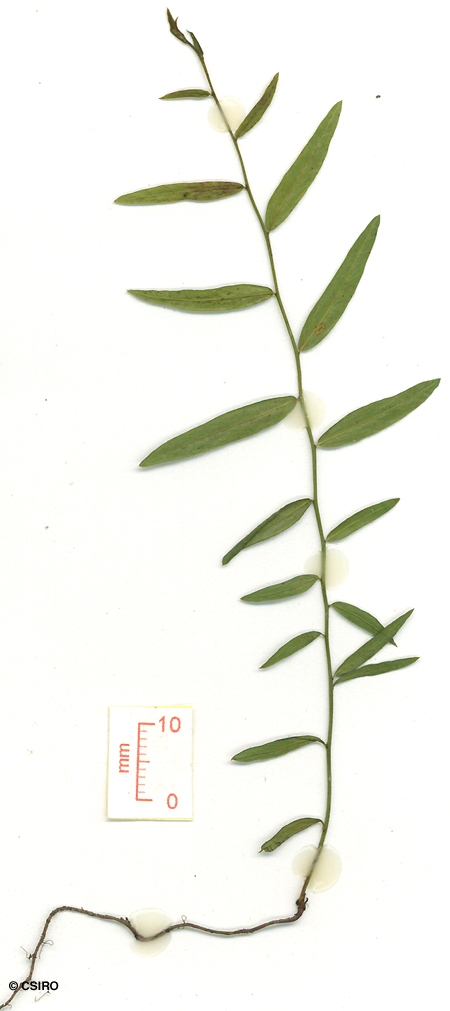Australian Tropical Rainforest Plants - Online edition
Ventilago viminalis Hook.





Hooker, W.J. (1848) Journal of an Expedition into the Interior of Tropical Australia : 369. Type: Australia; holo: K?.
Supplejack; Vine Tree; Medicine Bark
Usually grows into a small tree but occasionally flowers and fruits as a shrub. Juvenile plants can exhibit as vine-like growth habit.
Cataphylls, 4-6 produced before the first true leaves or reduced leaves. First true leaves narrowly elliptic, apex apiculate, base obtuse. Stipules about 0.7 mm long, purplish. At the tenth leaf stage: leaf blade narrowly elliptical, apex acute with a thickened point, base obtuse. Midrib and main lateral veins slightly raised on the upper surface. Stipules narrowly lanceolate, about 0.8 mm long. Seed germination time 18 days.
Endemic to Australia, occurs in WA, NT, NEQ, CEQ and southwards as far as north-western New South Wales. Altitudinal range from near sea level to 300 m. Usually grows in open forest but sometimes found in monsoon forest and vine thickets.
This species has been used as drought fodder and is highly regarded in this capacity. However, the high levels of tannin have caused problems in sheep under experimental conditions. Everist (1974).
Aborigines of the Broome district in Western Australia used the bark medicinally. Cribb (1981).





